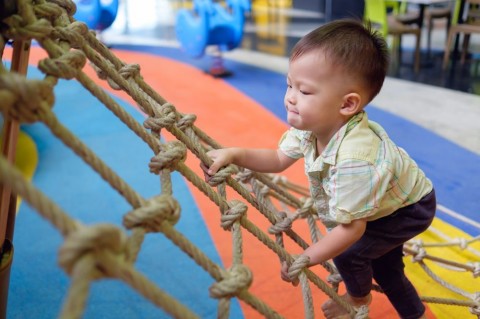Encouragment & Obstacles
The Encouragement of Eliminating Obstacles
The best encouragement you give is often the kind that is not seen – eliminating obstacles. This action is a hallmark of a Montessori education. Eliminating obstacles is not obvious – because you have removed them but it is essential for the amazing accomplishments that children achieve in a Montessori environment. To be clear, removing obstacles is not the same as doing the activity for the child. The achievement belongs to the child. Clearing the obstacles belongs to the adult.
The first obstacle is an environment that is not conducive to the child or their learning. A Montessori environment has everything in order for easy recognition for the child. The environment is child-sized, tables, chairs, shelves, bathrooms all accessible to the child without adult help or physical barriers. Obstacles can also be removed from home by placing everything the child needs at a level he/she can access. Plates, glasses, silverware can be located on a lower cabinet shelf. A small step stool can make the sink accessible. The same removal of obstacles can be achieved in bedrooms by installing low clothes racks and bottom drawers of dressers holding often worn clothing articles.
A second obstacle removed in a Montessori environment is the constant need of permission or direction. Once a child is introduced to an activity they are free to access it and work with it. This is also the beginning for the child to learn to make choices and make decisions instead of waiting to be told
what to do.
A third obstacle removed is the constant interruptions that plague a typical preschool. The ideal three hour work period fostered in a Montessori environment gives rise to the ability to concentrate. It gives rise to the ability to finish what you start. These are things that an adult cannot do for the child. These are skills that the child needs as an adult.
The fourth obstacle removed is not prohibiting social interaction and cooperation. Both are life-long assets and when learned young and practiced give great advantage to the child. However, you can’t remove the prohibition on socialization and cooperation without providing the necessary training for there to be benefits instead of deficits. Grace and courtesy is more than “please and thank you.” It is thoughtful consideration for those around you. Just as you provide an environment of concentration you also provide an environment of socialization where they work in tandem with one not intruding on the
other.
The fifth obstacle that a Montessori environment is good at removing is the negative – negative actions, negative words, negative attitudes, which unfortunately mostly belong to the adults. The training of the guide includes being careful with your words and your attitudes. Learning to be an effective Montessori guide requires you to dispense with the negative and enter into the world of “Yes.” It is not that you never use the word “no” but you frame it in a hopeful manner. “Can I do this?” asks a child. “Yes, but first we need to do this” (so you can succeed at what you are asking.) “Can I do this?” “Yes, maybe tomorrow.”
Removing the obstacles is an unseen work but vital to the success and well being of the child. Will there be failures for the child? Depends on how you define failure. “Do I get to do it again? “Yes! (until you succeed.)

